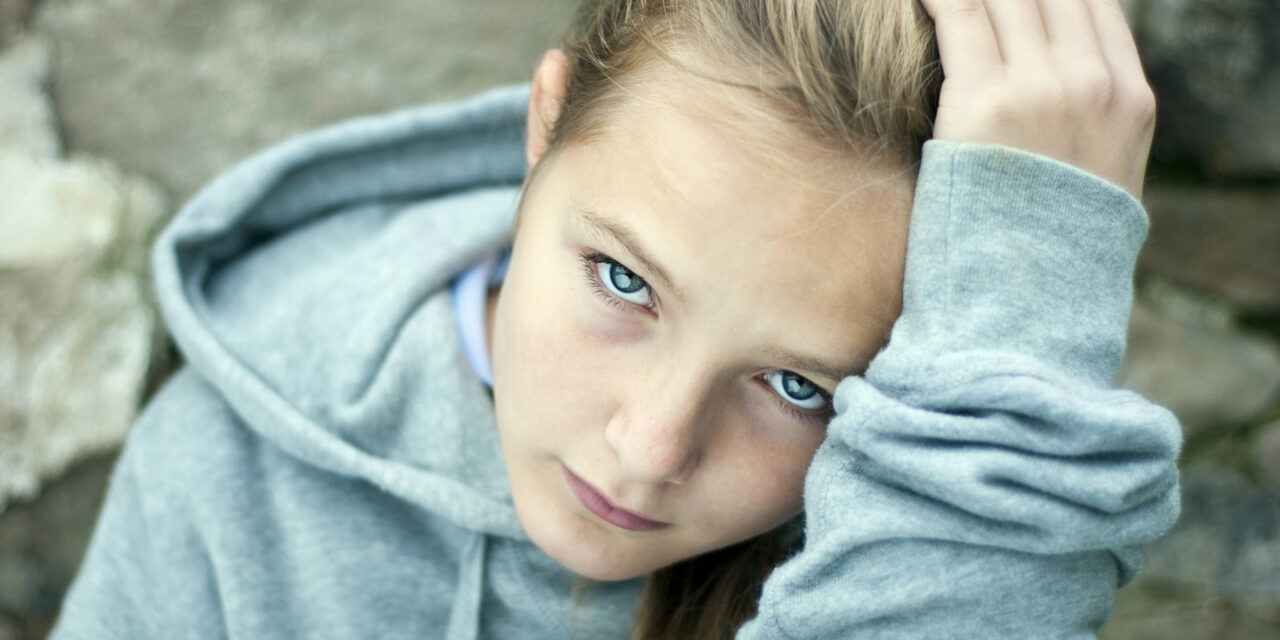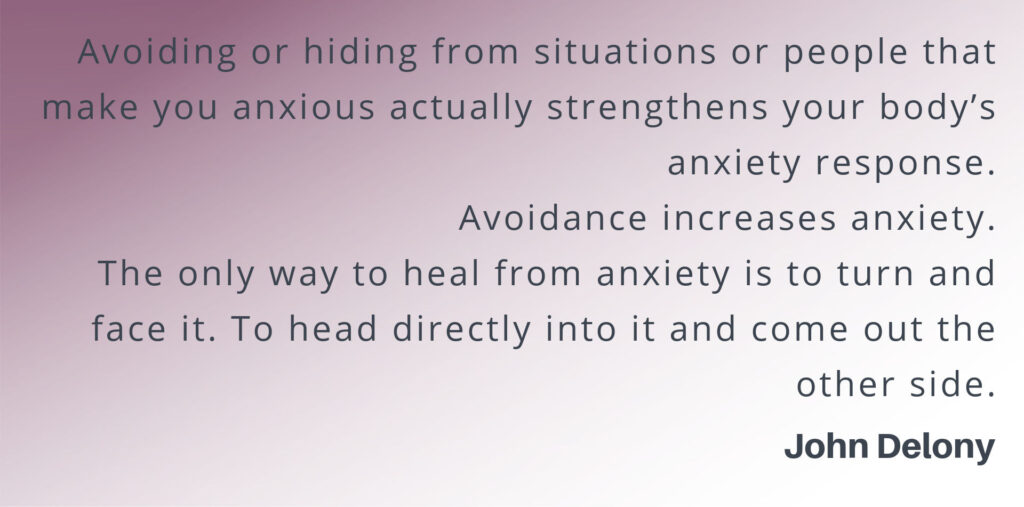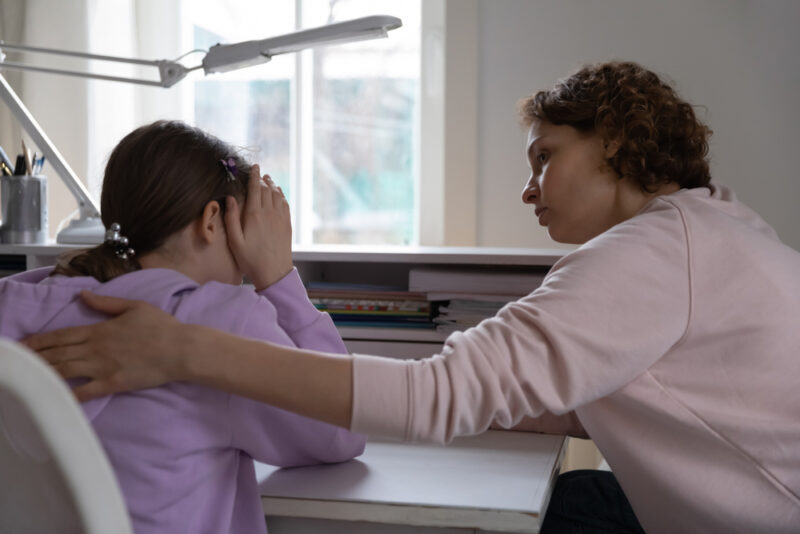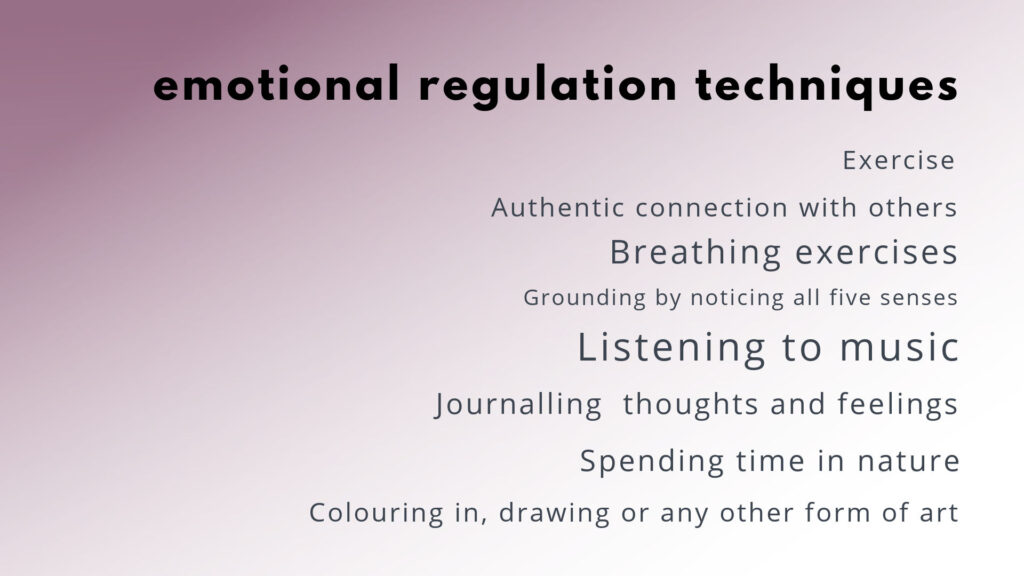When I was 13 years old, I had to present an Australian ballad to my English class for assessment. The instructions were to “learn it by heart and bring it to life in performance”.
Forty years later I still remember the words to The Wild Colonial Boy, though not fondly. My anxiety on that day and in the days before was ghastly. There were butterflies in my stomach, a racing heart, a dry mouth, and difficulty breathing. You know what I mean because we’ve all been there at some point!
Of course, I survived and over time came to realise anxiety is part of being human. In fact, in moderate doses, anxiety is useful, it motivates us to perform well or move out of situations that are unhealthy or unsafe.
Ironically, I went on to become an English teacher and now assign oral presentations to my own students. At school, we also ask kids to sit exams, participate in group work, and read their work aloud. To some lucky people that all sounds painless, but to many it is excruciating.
So how do we support our kids in facing challenges that make them anxious?
Move towards anxiety, not away from it
Kelsey Erdelyi is a clinical psychologist at Lourdes Hill College in Brisbane. She explains that anxiety is a natural physiological response to a perceived threat. Those threats would have been sabre-tooth tigers or grumpy mammoths in our early evolution.
These days they tend to be situations where we might feel embarrassed, or we might fail to live up to expectations. However, the anxiety feels just as bad and triggers fight, flight, or freeze responses.
It is little wonder that a young person experiencing anxiety will try to avoid that discomfort actively. They may want to stay home from school or claim they are sick. Their physical symptoms of anxiety can even make them feel genuinely sick.
As a parent, watching your child’s discomfort might make you want to protect them from the source of the anxiety by enabling their avoidance. That is quite natural, but you need to resist the temptation to provide a way out.
Kelsey Erdelyi says, “Avoiding anxiety provides short-term relief but it makes anxiety grow. The next time your child faces that situation the feeling of anxiety will be even greater.”
“Anxiety will always exist for your child and pushing it away will not be a helpful strategy in the future.” So, as counterintuitive as it feels, we need to help kids move toward the source of their anxiety. We need to encourage them to take the exam or turn up for the presentation. In doing so, we are helping them turn up for their future self.
Build the anxiety muscles
Kelsey says, “We need to help young people develop their anxiety muscles so they can tolerate discomfort. This is one way we build resilience. As with any muscle, growth involves repetition and gradually tolerating more and more challenge.”
The more times a young person faces challenges that cause anxiety, the easier it will get. The muscles grow and the child learns they can overcome hurdles. However, before building muscles you must challenge perceptions.
Unsafe or uncomfortable?
There is a difference between being unsafe and being uncomfortable, but the two may feel surprisingly similar. Giving a talk at school will not kill you, but for many students, it can feel like it might.
As parents and teachers, it is our job to respectfully help kids recognise the difference between real danger and extreme discomfort. We need to challenge their thinking and remind them that thoughts are not facts.
Challenging their thinking sounds like this:
-
- What is the worst that could happen in this situation?
- How would you cope if the worst happened?
- What is the probability that what you’re scared of will happen?
- What are some more likely outcomes?
- How will worrying about this help you and how will it hurt you?
- What would you say to a friend who had this worry?
When is it appropriate to seek help?
Parents may well wonder how much anxiety is too much, and at what point should you seek help?
Kelsey Erdelyi says, “Moderate levels of anxiety are a part of everyday life; however, anxiety is considered clinical when it is persistent and has significant impacts on a person’s functioning. For example, if your child worries throughout the day regularly or starts to avoid everyday activities.”
If you feel your child could be presenting with clinical levels of anxiety, reach out to your school psychology team. Your GP can also help with a mental health plan and a referral to an external psychologist who might best meet your child’s needs.
Steps to building anxiety muscles
If your child is experiencing ‘normal’ anxiety, but you know they can overcome the challenge ahead, then encourage them and support them by breaking the task into the following steps.
1. Check your own emotional state. Ensure you are feeling calm and in control of your emotions before you try to calm your child. Be aware that emotional responses are contagious. It is your job to share your calm, not generate more upset.
2. Ask them to notice what they are feeling in their body. This focuses their awareness and thinking.
3. Help your child calm their physiological responses. Help them by breathing with them. Ground them by drawing attention to their senses: What can they see, smell, and hear in that moment? They should catch your calm.
3. Normalise the anxious reaction. It is important for your young person to realise that what they are experiencing is human and will pass. Sometimes the anxiety is exacerbated by the worry that nobody else feels this way and they are somehow broken or faulty.
4. Help your child gain perspective by challenging their thinking. Use the questions we discussed earlier.
5. Break the task ahead into chunks. Big anxiety-provoking challenges can be broken down into small, achievable steps. For example, in the case of an oral presentation or an exam the steps might be:
-
- Turn up to school
- If necessary, talk to the teacher to let them know about the anxiety (In adolescence, this is something they can do themselves. When you speak for them it is disempowering)
- Use calm-down strategies.
- Challenge their own thinking with the questions you’ve taught them
6. Debrief with your child after the event so they can see their own growth. Ask them about their physical and emotional experience of the challenge. What surprised them? What did they learn about themselves? Then, what new information will they take with them into their next challenge?
Final thought…
Most adults have come to accept anxiety as part of being human. However, we need to remember that this is all new for our kids. When they are feeling those butterflies and the dry mouth and the sting of nervous charge, they feel terrible, and it is confusing.
We need to share our calm generously, and lovingly walk beside them telling our own stories of anxiety to show them, this too will pass.









